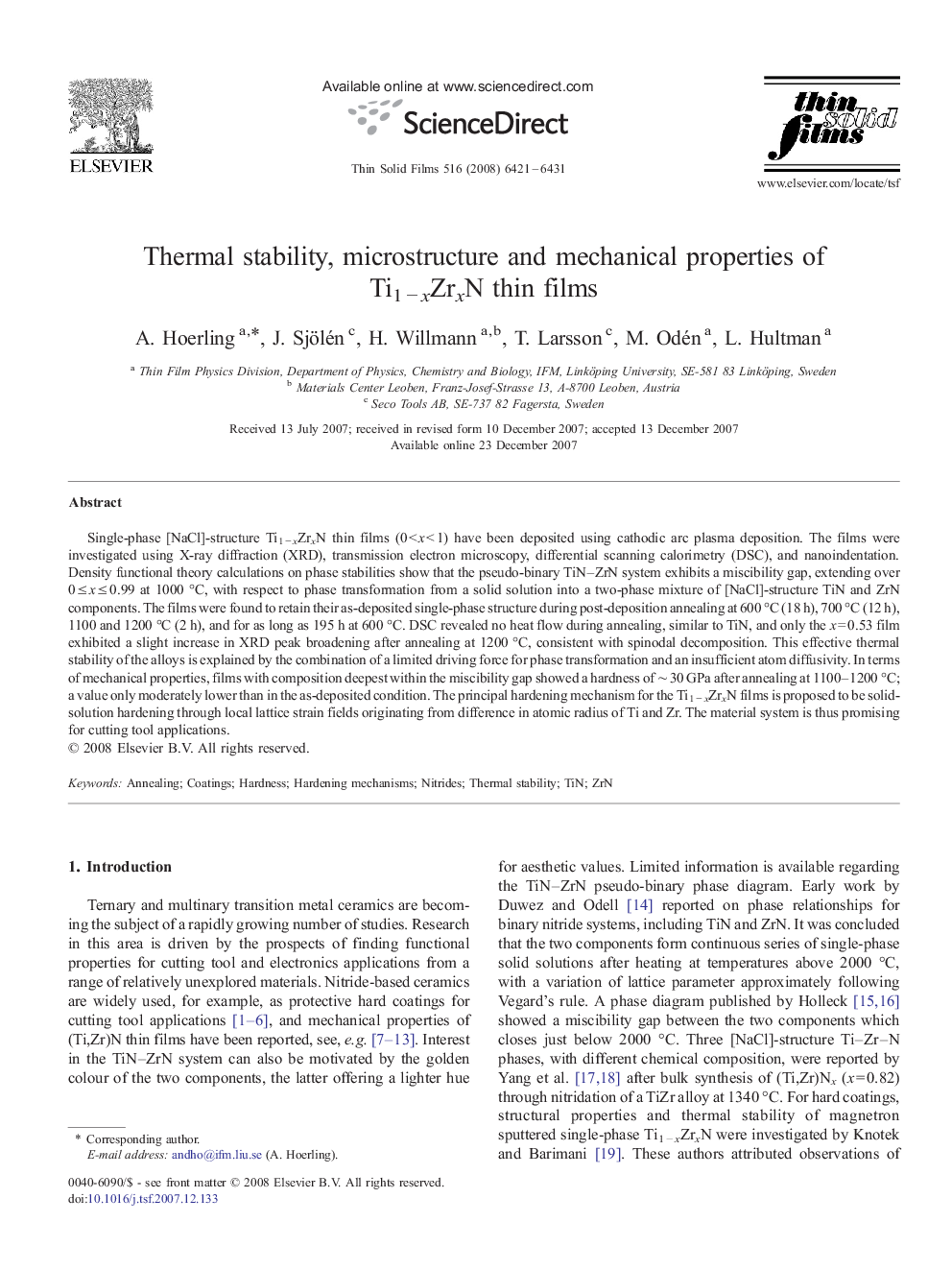| Article ID | Journal | Published Year | Pages | File Type |
|---|---|---|---|---|
| 1672443 | Thin Solid Films | 2008 | 11 Pages |
Single-phase [NaCl]-structure Ti1 − xZrxN thin films (0 < x < 1) have been deposited using cathodic arc plasma deposition. The films were investigated using X-ray diffraction (XRD), transmission electron microscopy, differential scanning calorimetry (DSC), and nanoindentation. Density functional theory calculations on phase stabilities show that the pseudo-binary TiN–ZrN system exhibits a miscibility gap, extending over 0 ≤ x ≤ 0.99 at 1000 °C, with respect to phase transformation from a solid solution into a two-phase mixture of [NaCl]-structure TiN and ZrN components. The films were found to retain their as-deposited single-phase structure during post-deposition annealing at 600 °C (18 h), 700 °C (12 h), 1100 and 1200 °C (2 h), and for as long as 195 h at 600 °C. DSC revealed no heat flow during annealing, similar to TiN, and only the x = 0.53 film exhibited a slight increase in XRD peak broadening after annealing at 1200 °C, consistent with spinodal decomposition. This effective thermal stability of the alloys is explained by the combination of a limited driving force for phase transformation and an insufficient atom diffusivity. In terms of mechanical properties, films with composition deepest within the miscibility gap showed a hardness of ∼ 30 GPa after annealing at 1100–1200 °C; a value only moderately lower than in the as-deposited condition. The principal hardening mechanism for the Ti1 − xZrxN films is proposed to be solid-solution hardening through local lattice strain fields originating from difference in atomic radius of Ti and Zr. The material system is thus promising for cutting tool applications.
